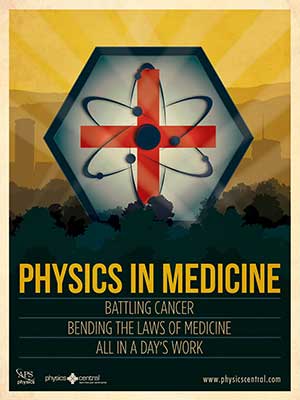Physics in Medicine
For centuries, many alchemists were driven by the prospect of transforming one element into another. Those seeking riches sought to change lead into gold and assumed that the rules which govern chemical interactions must, in some way, also determine the properties of an element. Such efforts were long seen as being firmly in the domain of the occult, or magical. For hundreds of years, transmuting one element into another was considered a fool’s errand.
Then, two scientists at the beginning of the 20th century, Frederick Soddy and Ernest Rutherford, recognized that radioactive elements are unstable in their structure, and over time change into more stable elements by shooting off high-energy particles. Discovering this process, called radioactive decay, helped us unravel the mysteries of alchemy and radioactivity, all at once.
Not long thereafter, other scientists reverse-engineered that decay process, bombarding atoms with high-speed protons to cause them to turn into heavier elements. Nowadays, this practice is commonplace; for instance, particle accelerators are used to produce Fluorine-18 for PET imaging, and Iodine-125 for a cancer treatment called brachytherapy, where radioactive elements are used to destroy a tumor from the inside out.
High-energy physics shows up all over the place in our fight against the deadliest diseases. Sometimes, it’s easiest to hit the tumor directly with the same kind of particle-beam they use to transform those elements (If you haven’t read our page on Proton Therapy, check it out!). With careful imaging and very precise tuning of the “muzzle velocity” of those protons, it’s possible to destroy a tumor without damaging the healthy tissue around it and without performing surgery!
What was once considered “bending the laws of reality” has now become commonplace in the world of medical physics. Modern physicists do things every day that would have sounded like science fiction a century ago, and miracles any further back than that: performing alchemy, using antimatter to track down one of the oldest and deadliest diseases, and destroying tumors with a building-sized particle cannon that doesn’t break the skin.
Thanks to the work of physicists, we have lasers to help us speed through checkout at the grocery store, and ultrasound technology to spare us the agony of passing a kidney stone. By testing the laws of the universe, studying it at the most fundamental level, we can discover things that have implications for everyone. Across the globe and throughout history, this study has driven civilization forward, beyond what we thought was the edge of the world, and into a bright and amazing future.











